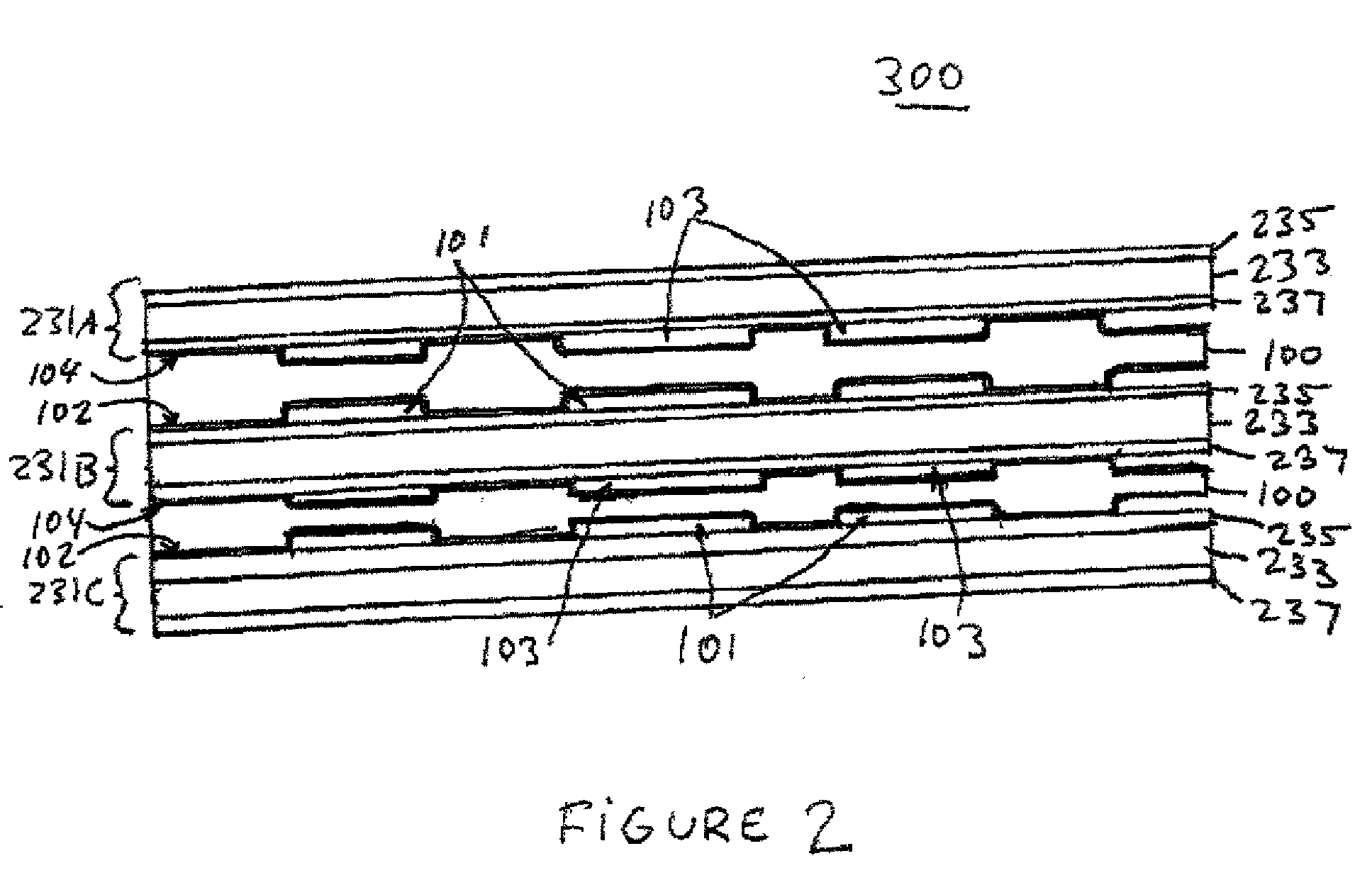Cermet and ceramic interconnects for a solid oxide fuel cell
a fuel cell and ceramic interconnect technology, applied in the field of fuel cell components, can solve the problems of difficult to reliably produce seals, limited cell area, and unsatisfactory approaches, and achieve the effect of high solids loading and high solids loading
- Summary
- Abstract
- Description
- Claims
- Application Information
AI Technical Summary
Benefits of technology
Problems solved by technology
Method used
Image
Examples
first embodiment
[0011] In the invention, the interconnect for a solid oxide fuel cell comprises a cermet material. An interconnect for a solid oxide fuel cell comprising a gas separator plate made from a CTE matched, electrically conductive but ionically non-conductive cermet material but without vias extending through the gas separator plate, reduces or eliminates the undesirable cross interconnect reactant permeability (i.e., leakage of the fuel and oxidant through the separator plate) and still meets all of the other desired characteristics of a functional interconnect. The dense cermet interconnect contains a continuous percolating electrically conductive network or phase on a microstructural scale in a host ceramic phase which is ionically non-conductive, instead of macroscopic discrete conducting tracks inside the ceramic plate of the prior art.
[0012] The use of a cermet interconnect has several advantages compared to the prior art configurations. It should be noted that these advantages are ...
second embodiment
[0022] In the invention, the interconnect includes one or more optional electrically conductive barrier layers which protect the conductive phase of the cermet from the ambient atmosphere (i.e., from the process gases) and which reduce or prevent oxidation of the conductive phase. For example, as shown in FIG. 2, the interconnect 100 of stack 300 may have a first barrier layer 102 on a first side of the interconnect that electrically contacts an anode 235 of an adjacent fuel cell, and a second barrier layer 104 on a second side of the interconnect that electrically contacts a cathode 237 of another adjacent fuel cell. The interconnect may contain either one of the barrier layers 102, 104 or both barrier layers 102, 104. The barrier layers are preferably dense and gas impermeable. The barrier layers are preferably sufficiently thin so as not to disrupt the CTE matching between the fuel cell electrolyte and the interconnect. For example, the barrier layers may be less than 10 microns ...
PUM
| Property | Measurement | Unit |
|---|---|---|
| Temperature | aaaaa | aaaaa |
| Temperature | aaaaa | aaaaa |
| Fraction | aaaaa | aaaaa |
Abstract
Description
Claims
Application Information
 Login to View More
Login to View More - R&D
- Intellectual Property
- Life Sciences
- Materials
- Tech Scout
- Unparalleled Data Quality
- Higher Quality Content
- 60% Fewer Hallucinations
Browse by: Latest US Patents, China's latest patents, Technical Efficacy Thesaurus, Application Domain, Technology Topic, Popular Technical Reports.
© 2025 PatSnap. All rights reserved.Legal|Privacy policy|Modern Slavery Act Transparency Statement|Sitemap|About US| Contact US: help@patsnap.com



